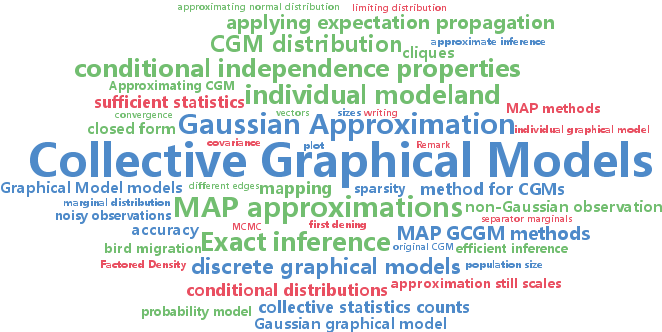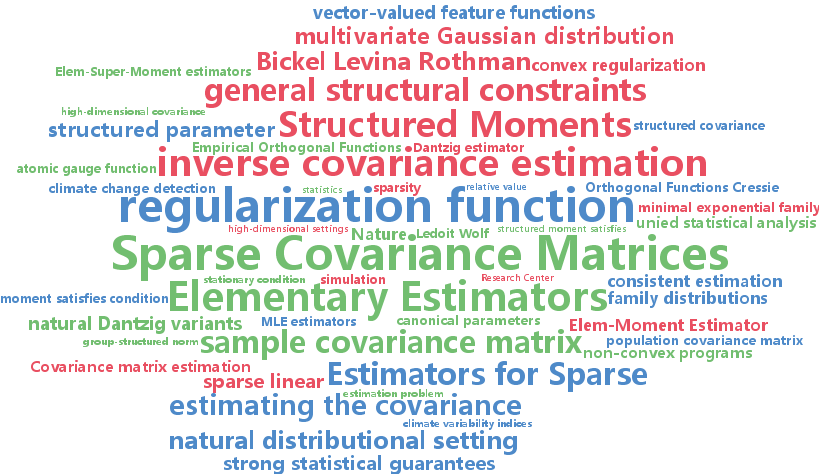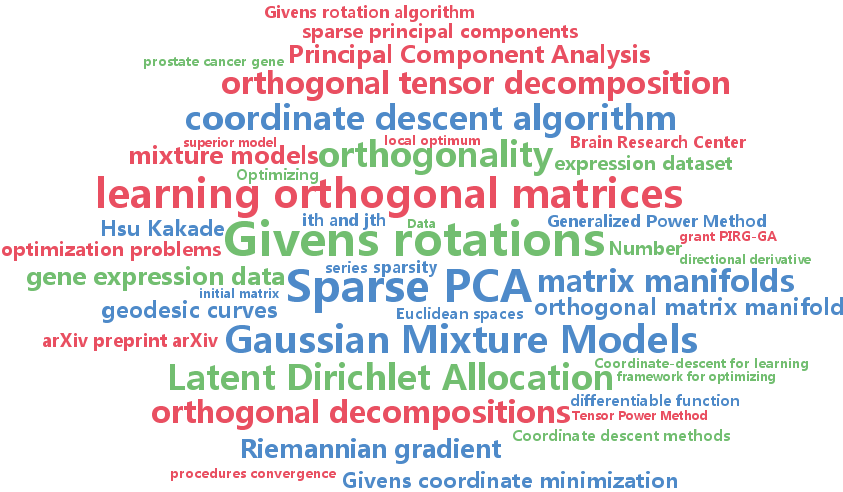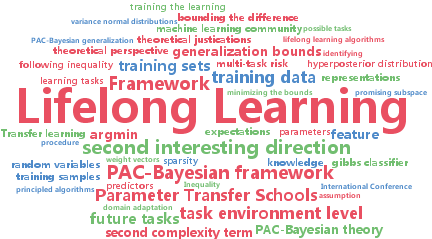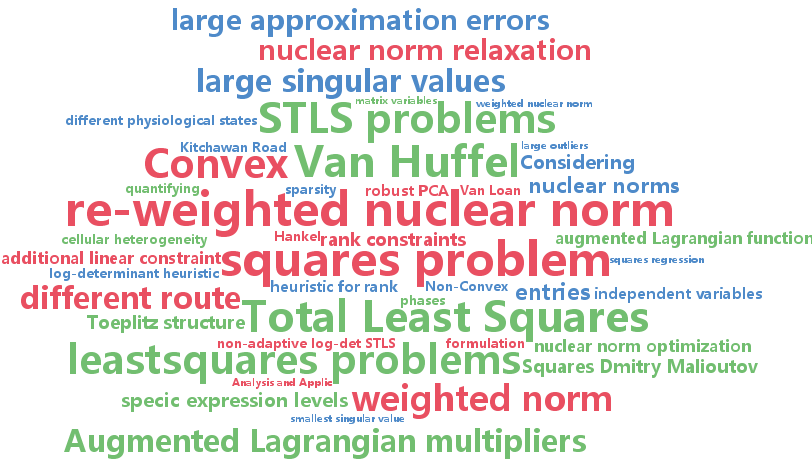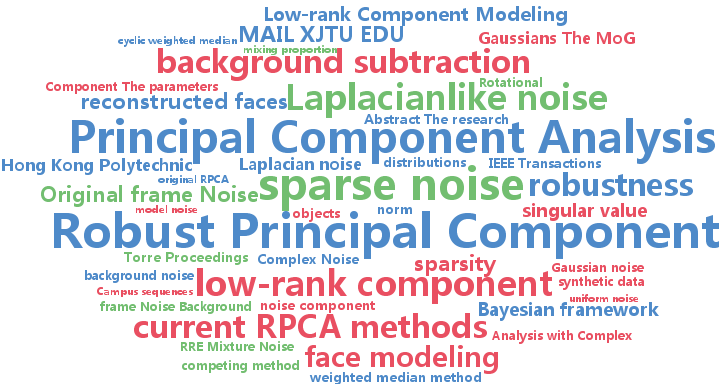sparsity
-
Safiye Celik and Benjamin Logsdon and Su-In Lee
Efficient Dimensionality Reduction for High-Dimensional Network Estimation (pdf)
We propose module graphical lasso (MGL), an aggressive dimensionality reduction and network estimation technique for a high-dimensional Gaussian graphical model (GGM). MGL achieves scalability, interpretability and robustness by exploiting the modularity property of many real-world networks. Variables are organized into tightly coupled modules and a graph structure is estimated to determine the conditional independencies among modules. MGL iteratively learns the module assignment of variables, the latent variables, each corresponding to a module, and the parameters of the GGM of the latent variables. In synthetic data experiments, MGL outperforms the standard graphical lasso and three other methods that incorporate latent variables into GGMs. When applied to gene expression data from ovarian cancer, MGL outperforms standard clustering algorithms in identifying functionally coherent gene sets and predicting survival time of patients. The learned modules and their dependencies provide novel insights into cancer biology as well as identifying possible novel drug targets.
-
Liping Liu and Daniel Sheldon and Thomas Dietterich
Gaussian Approximation of Collective Graphical Models (pdf)
The Collective Graphical Model (CGM) models a population of independent and identically distributed individuals when only collective statistics (i.e., counts of individuals) are observed. Exact inference in CGMs is intractable, and previous work has explored Markov Chain Monte Carlo (MCMC) and MAP approximations for learning and inference. This paper studies Gaussian approximations to the CGM. As the population grows large, we show that the CGM distribution converges to a multivariate Gaussian distribution (GCGM) that maintains the conditional independence properties of the original CGM. If the observations are exact marginals of the CGM or marginals that are corrupted by Gaussian noise, inference in the GCGM approximation can be computed efficiently in closed form. If the observations follow a different noise model (e.g., Poisson), then expectation propagation provides efficient and accurate approximate inference. The accuracy and speed of GCGM inference is compared to the MCMC and MAP methods on a simulated bird migration problem. The GCGM matches or exceeds the accuracy of the MAP method while being significantly faster.
-
Eunho Yang and Aurelie Lozano and Pradeep Ravikumar
Elementary Estimators for Sparse Covariance Matrices and other Structured Moments (pdf)
We consider the problem of estimating distributional parameters that are expected values of given feature functions. We are interested in recovery under high-dimensional regimes, where the number of variables $p$ is potentially larger than the number of samples $n$, and where we need to impose structural constraints upon the parameters. In a natural distributional setting for this problem, the feature functions comprise the sufficient statistics of an exponential family, so that the problem would entail estimating structured moments of exponential family distributions. A special case of the above involves estimating the covariance matrix of a random vector, and where the natural distributional setting would correspond to the multivariate Gaussian distribution. Unlike the inverse covariance estimation case, we show that the regularized MLEs for covariance estimation, as well as natural Dantzig variants, are \emph{non-convex
-
Uri Shalit and Gal Chechik
Coordinate-descent for learning orthogonal matrices through Givens rotations (pdf)
Optimizing over the set of orthogonal matrices is a central component in problems like sparse-PCA or tensor decomposition. Unfortunately, such optimization is hard since simple operations on orthogonal matrices easily break orthogonality, and correcting orthogonality usually costs a large amount of computation. Here we propose a framework for optimizing orthogonal matrices, that is the parallel of coordinate-descent in Euclidean spaces. It is based on {\em Givens-rotations
-
Anastasia Pentina and Christoph Lampert
A PAC-Bayesian bound for Lifelong Learning (pdf)
Transfer learning has received a lot of attention in the machine learning community over the last years, and several effective algorithms have been developed. However, relatively little is known about their theoretical properties, especially in the setting of lifelong learning, where the goal is to transfer information to tasks for which no data have been observed so far. In this work we study lifelong learning from a theoretical perspective. Our main result is a PAC-Bayesian generalization bound that offers a unified view on existing paradigms for transfer learning, such as the transfer of parameters or the transfer of low-dimensional representations. We also use the bound to derive two principled lifelong learning algorithms, and we show that these yield results comparable with existing methods.
-
Dmitry Malioutov and Nikolai Slavov
Convex Total Least Squares (pdf)
We study the total least squares (TLS) problem that generalizes least squares regression by allowing measurement errors in both dependent and independent variables. TLS is widely used in applied fields including computer vision, system identifi cation and econometrics. The special case when all dependent and independent variables have the same level of uncorrelated Gaussian noise, known as ordinary TLS, can be solved by singular value decomposition (SVD). However, SVD cannot solve many important practical TLS problems with realistic noise structure, such as having varying measurement noise, known structure on the errors, or large outliers requiring robust error-norms. To solve such problems, we develop convex relaxation approaches for a general class of structured TLS (STLS). We show both theoretically and experimentally, that while the plain nuclear norm relaxation incurs large approximation errors for STLS, the re-weighted nuclear norm approach is very effective, and achieves better accuracy on challenging STLS problems than popular non-convex solvers. We describe a fast solution based on augmented Lagrangian formulation, and apply our approach to an important class of biological problems that use population average measurements to infer cell-type and physiological-state specific expression levels that are very hard to measure directly.
-
Qian Zhao and Deyu Meng and Zongben Xu and Wangmeng Zuo and Lei Zhang
Robust Principal Component Analysis with Complex Noise (pdf)
The research on robust principal component analysis (RPCA) has been attracting much attention recently. The original RPCA model assumes sparse noise, and use the $L_1$-norm to characterize the error term. In practice, however, the noise is much more complex and it is not appropriate to simply use a certain $L_p$-norm for noise modeling. We propose a generative RPCA model under the Bayesian framework by modeling data noise as a mixture of Gaussians (MoG). The MoG is a universal approximator to continuous distributions and thus our model is able to fit a wide range of noises such as Laplacian, Gaussian, sparse noises and any combinations of them. A variational Bayes algorithm is presented to infer the posterior of the proposed model. All involved parameters can be recursively updated in closed form. The advantage of our method is demonstrated by extensive experiments on synthetic data, face modeling and background subtraction.
-
Zhaoshi Meng and Brian Eriksson and Al Hero
Learning Latent Variable Gaussian Graphical Models (pdf)
Gaussian graphical models (GGM) have been widely used in many high-dimensional applications ranging from biological and financial data to recommender systems. Sparsity in GGM plays a central role both statistically and computationally. Unfortunately, real-world data often does not fit well to sparse graphical models. In this paper, we focus on a family of latent variable Gaussian graphical models (LVGGM), where the model is conditionally sparse given latent variables, but marginally non-sparse. In LVGGM, the inverse covariance matrix has a low-rank plus sparse structure, and can be learned in a regularized maximum likelihood framework. We derive novel parameter estimation error bounds for LVGGM under mild conditions in the high-dimensional setting. These results complement the existing theory on the structural learning, and open up new possibilities of using LVGGM for statistical inference.

